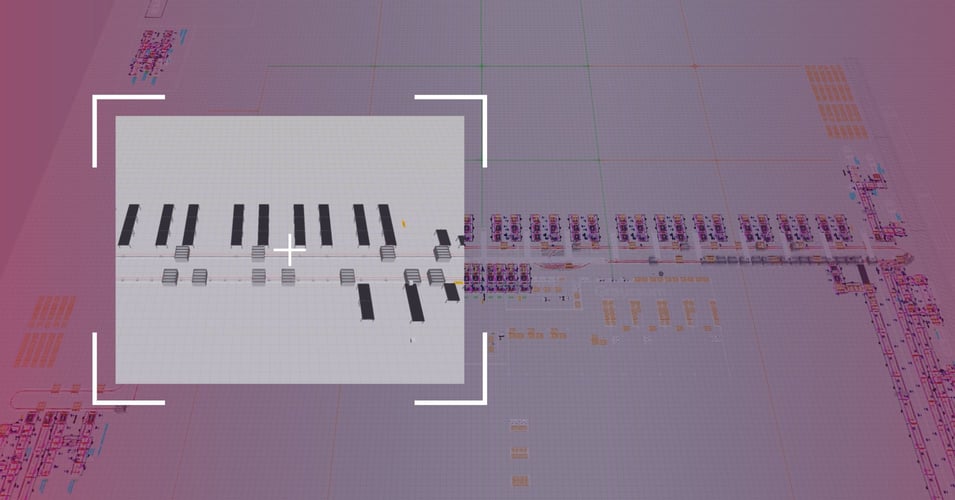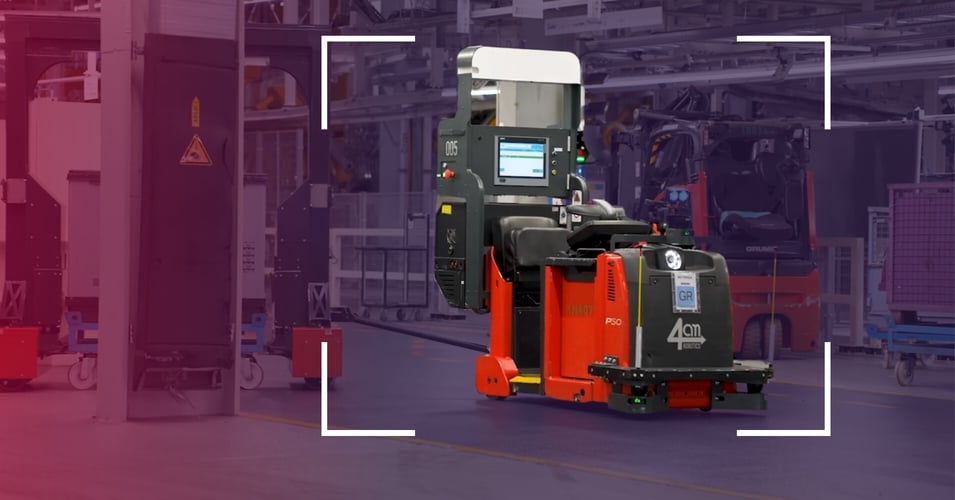.png?width=950&name=Blogbeitrag%20MFI%20C&W%20(1).png)
The aim of Industry 4.0 is to establish digitization and automation in the manufacturing industry in order to optimize production processes. The last few years in particular have shown that automation solutions have been established in all industries. They are the crucial factor in ensuring that companies remain competitive in the future. At the heart of the 4th industrial revolution, is the smart factory.
The smart factory is the vision of a production environment in which manufacturing plants and logistics systems able to organize themselves without the need for human intervention. Its main features are fully integrated production and intralogistics systems with heavily automated processes based on real-time data. The smart factory is capable of meeting all client requirements: high quality, faster delivery timescales, and exceptional customization. This is the long-term goal that the innovative developments of industry 4.0 are ultimately working towards.
Integration and communication - Basic requirements for a successful smart factory
The people, plants and data management systems in a conventional factory all operate in a way that’s isolated from one another, which means they constantly need to be coordinated and integrated manually. Every component in the production and logistics environment must be connected to a common digital system and fully integrated into a higher-level system to ensure an effective transformation to a smart factory. In other words, the crucial factor is changing the strategy from just integrating the hardware, to using software to facilitate full integration into digital process environments. This ensures that machines, plants, warehouses and material flow systems are able to share information in real time that enables them to control the manufacturing process independently.
In this regard, linking production and intralogistics is largely responsible for how successful digitization and automation have been to date. In addition to controlling the production process, seamless interaction establishes rapid communication to enable the production process to fine-tune itself. This integration into a single unit turns the rigid value chain into a dynamic network that will meet any future requirements. As a result, production and intralogistics can no longer be considered as two mutually exclusive constituent parts. Instead, integrating both components into one overall system should be in greater focus as early as the planning stage for a new factory. By doing so, you will be able to make the most of any synergies from the get-go.
The benefits of functional linking
Developing systems into a smart factory is complex, and a myriad of challenges lie ahead - from the technical components, to the infrastructure, to hiring and training people to provide digital expertise. That being said, the abilities integrate intelligent intralogistics and production processes within the smart factory provides significant benefits that make the transformation well worth the effort:
• Efficient and secure in-house supply chains
• Customized mass production, even in extremely complex production processes
• The vast majority of delivery dates are adhered to, and inventory sizes are reduced simultaneously
• Production chain transparency is ensured by networking the production site
• Guaranteeing quick and agile adaptation when production processes are changed
The future is being forged at the juncture of production and logistics
Customization, quality, price pressure, sourcing - Companies face a huge number of ever-increasing challenges in the era of Industry 4.0. Intelligent, flexible and adaptable solutions are the order of the day to make sure demands are met. Staff shortages precipitated by the pandemic also highlighted the need for companies to take urgent action. One solution from the smart factory concept that has been put forward to meet these various challenges is what are known as
autonomous mobile robots, or AMRs for short.
An AMR is able to perceive its environment and move independently within it. They differ from predecessor model such as classic AGVs (automated guided vehicles) in that they don't run on rails or tracks, and don’t need to be constantly monitored. These robots use advanced sensors, cameras, artificial intelligence and a path planning computer to move around the logistics and production halls without the need for cables.
This progressive form of collaboration between humans and robots enables the industry to find innovative solutions to support production and logistics in the smart factory, whilst staying competitive in the market. Rigid transport systems are out of fashion these days, as businesses are increasingly recognizing the need to develop extremely flexible production systems, and they understand the value of being able to seamlessly merge intralogistics and manufacturing. Autonomous transport robots interlink the incoming goods, picking and packing, warehouse, production and outgoing goods departments without involving any interfaces, turning the internal supply and process chain into a finely-tuned, efficient and transparent process. By flexibly adapting to new production and logistics arrangements, companies are also able to make their material flows more agile, allowing them to respond more readily to changing requirements. In recent years, autonomous mobile robots have moved out of the realm of science fiction, and they are now a viable solution for meeting the bespoke product demands of end clients while keeping product costs at the same level. Needless to say, extremely flexible AMRs that can demonstrate virtually 100% availability and seamless integration into clients' existing processes are the future of the manufacturing industry.
SCIO supports its clients with a large range of innovative intralogistics solutions for autonomous and flexible material handling, from the warehouse shelf to the production line, in a way that’s specifically tailored to their needs and requirements.
Learn more about SCIO’s innovative solutions in the autonomous mobile robot sector here.


















.jpg?height=500&name=SCIO-teamevents-2024-sport-header%20(1).jpg)
